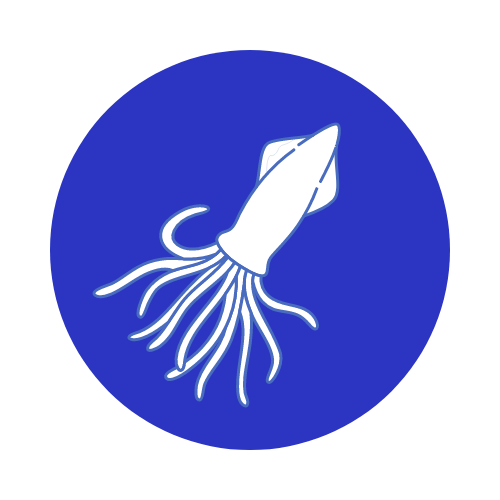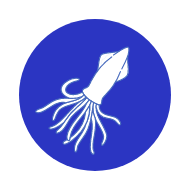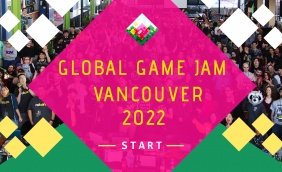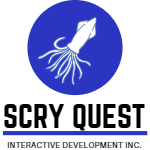This post is about the making of the game, so hopefully you find that interesting, or at least enjoy these anecdotes 🙂
Making of
By this point, I’ve put hundreds of hours not just into making Duality: An Era of Stone, but also into playing the game. Yet every time I fire it up again, I am tickled by the snarky humor, adorable artwork, and moody music. Plus, the Match-4 effects still excite me!
Rewind Back
Just after Global Game Jam Vancouver 2022 (with the theme “duality”), we had just made a match-3 game where the tiles were dual-sided with opposing themes. (*Read original post here) There was no real story to it yet, but we knew it was a unique take on the tile-matching genre – a transforming board and unique match-4 effects were a great starting point, and we wanted to kick it up a notch.
The Narrative
We admittedly struggled a bit in the first few weeks of development with this kind of ‘backward design process’ – coming up with a cohesive metagame and story after some core mechanics were already built. We racked our brains and bandied about several ideas, but nothing quite fit. After several rejected presentations, our Narrative Designer, Gaby, eventually came up with the concept which answered all of our questions – the player is a new deity, building a Stone Age civilization, and unlocking evolutions of it as they advance. We loved it! Gaby researched Stone Age technologies in order to guide the fiction based on factual information about the era – you can even find some factoids about unlocked artifacts in your Timeline!

Timeline
Click on the technology discovered and learn fun facts about it.
Level Design
Playing the game also reminds me of the puzzles in design and development we had to solve to make our first “big complicated machine” work.
One such puzzle: as the Level Designer, I needed a tool to build levels in a way that they would be consistent, easily editable, and could slot into the existing mechanisms immediately. We were keeping ourselves on a short timeline, which meant that building a standalone level editor from scratch was going to be a sketchy plan. So our Lead Programmer, Dain, used the Godot game engine – which we built the mechanics in – to make a level editor using the engine’s tools. Then all I had to do was open the game project in Godot, and everything I needed to build levels was right there. Clever solution, Dain!
Another puzzle for me was how to support the narrative concept with level design. To do so, I had to make levels feel different from each other in a flavorful way. We knew we needed the player to do different things to build their realm, so I codified levels as “Main”, “Tech”, or “Food”. The Main category being core to advancing the game, I wanted these levels to progress in complexity and give the player the most balanced gameplay experience. Food levels need to be replayed repeatedly, so they necessitated more randomness in their gameplay. Tech levels, to stay on brand, were crafted to require planning and thought in order to complete. I then put in the art and audio requests to support these themes.
The Artwork
Aelia Dot had free reign to create in her own style with the caviat that sometimes there were assets that needed to be specific in size (ugh, nested resizing containers!), but otherwise, the implementation of the artwork for the game was highly collaborative.
Anecdotally speaking, at one point there was a mix-up during development, where we needed some bits for the Population avatars, and we ended up with a gallery of Deity avatar bits instead. The assets she made were gorgeous! So rather than let them go to waste, we came up with an idea to incorporate them into the metagame and player progression.
Deity Avatar
Now the player unlocks avatar components and builds “How the population sees you”!
The Music
My favorite story during development comes from the music composer, Sophian. Inspired by the primitive theme of the Stone Age, he decided to create music which did not use modern instruments or musical harmonies… This led to an attempt at crafting instruments out of organic materials. First up? A carrot flute. That’s right. A. Carrot. Flute. When that didn’t quite pan out (sorry, spoilers!), the intrepid musician went a different path. Based on a recommendation from a hardware store employee (while buying a drill bit for the carrot), Sophian investigated using a dried bamboo reed to create a variety of sounds, which you hear in the game’s music today.
User Feedback
Of course, a number of design changes were necessitated based on user testing – early in development we did a lot of testing with friends and family and other supporters. Many of these folks had not played a tile-matching game before (many of them were not gamers at all!), so by observing them play and by reviewing their feedback, we got a better understanding of what we needed to tutorialize. Thus, the tutorial levels evolved throughout the entire project, and are still evolving based on new feedback we are getting. I actually find it pretty exciting to think of new ways to teach a player how to play within the game itself, so this is one of my favorite kinds of puzzles to tackle in game design.
Speaking of user feedback, our team would like to give a HUGE SHOUTOUT to our users and testers – your participation and support are fuel for us to keep improving the game! Thank you, thank you, thank you.
The Future
As Creative Director for this project I take these learnings and more, as opportunities to create better future content for Duality: An Era of Stone. With our plans of expanding player engagement in the Realm Map, new levels and challenge types, and more of the humorous narrative, there will be tons of new design and development puzzles for us to solve, and it’s exciting to think about.
I hope you are enjoying the game so far, and getting hyped with us about the future we will bring to it!














